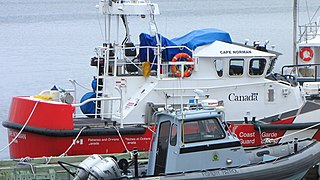 W
WThe designation Canadian Coast Guard Ship is applied as a prefix to vessels in the Canadian Coast Guard.
 W
WThe Martha L. Black-class icebreakers are a class of six light icebreaker and buoy tenders constructed for and operated by the Canadian Coast Guard. Built in the 1980s, the class operates on both coasts of Canada and have been used for operations in the Arctic region, including the search for the ships of Franklin's lost expedition. They are rated as "high endurance multi-tasked vessels" under Canadian Coast Guard naming rules.
 W
WThe Canadian Coast Guard (CCG) maintains a fleet of sea and lake going vessels, hovercraft, and aircraft. The variety of equipment allows the CCG to perform its mandated functions of navaids and sea-going transportation management, search and rescue, marine pollution response and the support of other Canadian federal authorities.
 W
WCCGS Alfred Needler is an offshore fishery science vessel operated by the Canadian Coast Guard. The vessel entered service in 1982 with the Department of Fisheries and Oceans, stationed at the Bedford Institute of Oceanography in Dartmouth, Nova Scotia. In 1995, in order to reduce the number of ships and combine tasks, the Fisheries and Oceans fleet and the Canadian Coast Guard fleets were merged under the Canadian Coast Guard. Alfred Needler is currently in service.
 W
WCCGS Cap Breton is one of the Canadian Coast Guard's 36 Cape-class motor lifeboats. The vessel is stationed in Shippegan, New Brunswick.
 W
WCCGS Cap Percé is one of the Canadian Coast Guard's 36 Cape-class motor lifeboats. She was scheduled to be stationed at a new Coast Guard station in Kegaska, Quebec, on the Gulf of St Lawrence. Like her sister ships she will be staffed by a crew of four, two of whom will be search and rescue technicians.
 W
WCCGS Cape Ann is one of the Canadian Coast Guard's 36 Cape-class motor lifeboat. Cape Ann was built in the Victoria Shipyards, in Vancouver, and was dedicated at Victoria, British Columbia in June 2005 and is stationed at Tofino. Cape Ann was profiled in a segment on this class of motor lifeboats on the television show How things work.
 W
WCCGS Cape Caution is one of the Canadian Coast Guard's 36 Cape-class motor lifeboat. The ship was built at the Victoria Shipyards, in Vancouver, and is stationed at Powell River, British Columbia.
 W
WCCGS Cape Cockburn is one of the Canadian Coast Guard's 36 Cape-class motor lifeboats. Cape Cockburn was built in the Victoria Shipyards, in Vancouver, and is stationed at Powell River, British Columbia.
 W
WCCGS Cape Commodore is one of the Canadian Coast Guard's 36 Cape-class motor lifeboats. The vessel was built in Victoria Shipyards, in Vancouver, British Columbia and was stationed in Tobermory, Ontario, in September 2005.
 W
WCCGS Cape Dauphin is one of the Canadian Coast Guard's 36 Cape-class motor lifeboats. Cape Dauphin was built at the Victoria Shipyards, in Vancouver, British Columbia. She was officially named and dedicated at her home port, Prince Rupert, in July 2011.
 W
WCCGS Cape Discovery is one of the Canadian Coast Guard's 36 Cape-class motor lifeboats.` She is stationed at Goderich, Ontario. At the vessel's official christening, on June 10, 2006, the Minister of Fisheries and Oceans Canada, Loyola Hearn, said: "Having this state-of-the-art vessel for our personnel provides them with greater safety, as they aid those in distress -- very often in conditions that put their own lives at risk. With the cutter Cape Discovery, we are well positioned to respond to emergency calls, twenty-four hours a day, seven days a week."
 W
WCCGS Cape Dundas is one of the Canadian Coast Guard's 36 Cape-class motor lifeboats. She was christened in 2005, at the Canadian Coast Guard Sub-Station at Amherstburg, Ontario. On May 7, 2006, the crew of Cape Dundas was credited with discovering a large oil spill from General Chemicals of Amherstburg.
 W
WCCGS Cape Edensaw is one of the Canadian Coast Guard's 36 Cape-class motor lifeboats. Cape Edensaw was built at the Victoria Shipyards in Vancouver, and was dedicated at Victoria, British Columbia in June 2005.
 W
WCCGS Cape Fox is one of the Canadian Coast Guard's 36 Cape-class motor lifeboats. She and a sister vessel, CCGS Cape Norman, serve the northern coast of Newfoundland. Her home port is Lark Harbour.
 W
WCCGS Cape Hearne is one of the Canadian Coast Guard's 36 Cape-class motor lifeboats. She as christened in 2005, at the Canadian Coast Guard station at Kingston, Ontario. According to Peter Milliken, the local member of Parliament: "Kingston, with its long-standing history with fishing, maritime trade and recreational boating fully understands the clear need for search and rescue capacity on our Great Lakes. Assigning these new state-of-the-art lifeboats to coastal communities demonstrates the federal commitment to providing the highest levels of safety to ensure the ongoing prosperity and enjoyment of our aquatic riches."
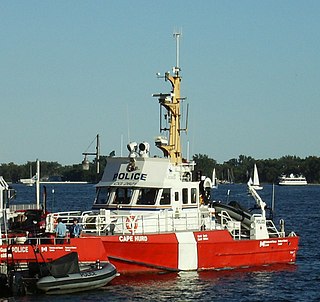 W
WCCGS Cape Hurd is a 21.4-metre (70 ft) mid-shore patrol vessel formerly serving with the Canadian Coast Guard and last stationed in Sarnia, Ontario. The vessel is classed for inland waters with no ice-class. It now serves as a fireboat in Toronto.
 W
WCCGS Cape Lambton is one of the Canadian Coast Guard's 36 Cape-class motor lifeboat. The vessel was built in 2000, in Kingston, Ontario and was stationed in Port Dover, on Lake Erie, in August 2005. The ship is named for the southern tip of Banks Island in the Northwest Territories and in turn named for Lord Durham, John Lambton, 1st Earl of Durham.
 W
WCCGS Cape Naden is one of the Canadian Coast Guard's 36 Cape-class motor lifeboat. Cape Naden was built at the Victoria Shipyards, in Victoria, British Columbia. Keith Ashfield Canada's Minister of Fisheries and Oceans and Minister for the Atlantic Gateway officiated at the vessel's dedication at Pat Bay.
 W
WCCGS Cape Norman is one of the Canadian Coast Guard's 36 Cape-class motor lifeboats. She and a sister vessel, CCGS Cape Fox, serve the northern coast of Newfoundland. Her home port is Port aux Choix. She and Cape Fox were built in 2002 at Victoria Shipyards, Victoria, British Columbia. The two vessels were shipped from Vancouver to New York City aboard another vessel, where they proceeded under their own power.
 W
WCCGS Cape Palmerston is one of the Canadian Coast Guard's 36 Cape-class motor lifeboat. Cape Palmerston was built at the Victoria Shipyards, in Vancouver, British Columbia. She was officially named and dedicated at her home port, Campbell River, in June 2011.
 W
WCCGS Cape Spry is a Cape-class lifeboat in the Canadian Coast Guard Service, stationed at Souris, Prince Edward Island.
 W
WCCGS Cape Storm is a Cape-class motor lifeboat of the Canadian Coast Guard. She is stationed at Parry Sound, and travels to the Lake Ontario terminus of the Welland Canal at Port Weller, Ontario.
 W
WCCGS Cape Sutil is a Canadian Coast Guard Cape-class motor lifeboat stationed at Port Hardy, British Columbia. She was commissioned by Herb Dhaliwal, the Minister of Fisheries and Oceans, on 1 August 2000 at CCG Station Port Hardy at the northern tip of Vancouver Island.
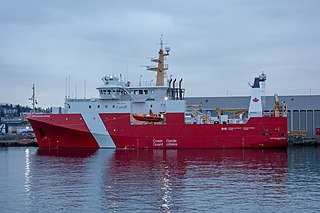 W
WCCGS Capt. Jacques Cartier is an offshore fisheries research ship of the Canadian Coast Guard. The ship was ordered in 2011 as part of the Canadian National Shipbuilding Procurement Strategy (NSPS) as a replacement for aging Canadian Coast Guard vessels. Capt. Jacques Cartier is the sister ship of CCGS Sir John Franklin and CCGS John Cabot. The ship was constructed at Seaspan Shipyard, Vancouver, British Columbia and launched on 5 June 2019.
 W
WCCGS Cove Isle is a navigation aids tender in the Canadian Coast Guard. Cove Isle is assigned to the Canadian Coast Guard's Central and Arctic Region and is based out of CGS Base Parry Sound, Ontario, on Lake Huron.
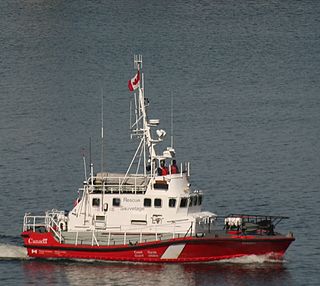 W
WThe Canadian Coast Guard has had two motor lifeboats named CCGS Clarks Harbour. The first was a 13-metre (43 ft) vessel, which entered service in 1996.
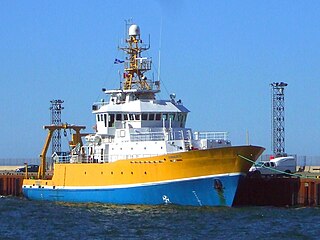 W
WCoriolis II is a Canadian research vessel. She is homeported in Rimouski, Quebec. She is operated by a consortium of five institutions: Institut des sciences de la mer à Rimouski (ISMER), the Université du Québec à Montréal (UQAM), McGill University, the Institut national de la recherche scientifique - Eau, terre et environnement (INRS-ETE) and the Maurice Lamontagne Institute (MLI-DFO). The vessel was constructed in 1990 by Versatile Pacific Shipyards of Esquimalt, British Columbia for the Canadian Coast Guard. Initially named CCGS John Jacobson, the vessel was deployed for search and rescue missions along Canada's coastlines. The Canadian Coast Guard took John Jacobson out of service in 1999 and sold the ship to her current owners in 2001.
 W
WCCGS Corporal Teather, C.V. is the third of nine of the Canadian Coast Guard's Hero-class patrol vessel. Constructed in 2013, the ship entered service the same year. Corporal Teather C.V. is based in Dartmouth, Nova Scotia, tasked with fisheries patrol and enforcement.
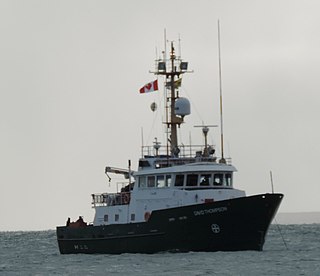 W
WRV David Thompson is a Parks Canada mid-shore scientific research and survey vessel, that entered service in 2016. David Thompson has been used to carry out underwater archaeology work with Parks Canada during the survey of HMS Erebus and HMS Terror, the two Franklin Expedition ships lost in Northern Canadian waters. The vessel was formerly a fisheries patrol vessel of the Canadian Coast Guard named CCGS Arrow Post.
 W
WCCGS Frederick G. Creed is a hydrographic survey vessel operated by the Canadian Coast Guard on behalf of the Canadian Hydrographic Service, a scientific agency of the Department of Fisheries and Oceans. The ship was built in 1988 by Swath Ocean Systems Incorporated of San Diego, California and entered service the same year.
 W
WCCGS Gordon Reid is a mid-shore fisheries patrol vessel of the Canadian Coast Guard. The vessel entered service in 1990 on the West Coast of Canada and is still in active service. In 2014, Gordon Reid responded to the distress signal of MV Simushur which had lost engine power off the coast of Haida Gwai in British Columbia.
 W
WCCGS Hudson is an offshore oceanographic and hydrographic survey vessel operated by the Canadian Coast Guard. The ship entered service in 1963 with the Canadian Oceanographic Service, stationed at the Bedford Institute of Oceanography, called CSS Hudson. The ship made several significant scientific voyages, among them the first circumnavigation of the Americas in 1970. The ship was transferred to the Canadian Coast Guard in 1996 and remains in service.
 W
WCCGS John P. Tully is an offshore oceanographic science vessel in the Canadian Coast Guard operating out of Pacific Region at CGS Base Patricia Bay in Sidney, British Columbia. Prior to 1995, the ship was assigned to Fisheries and Oceans Canada. The vessel entered service in June 1985 with the Department of Fisheries and Oceans on the West Coast of Canada. In 1995, the fleets of Fisheries and Oceans and the Canadian Coast Guard were merged under Canadian Coast Guard command and John P. Tully became a Coast Guard vessel.
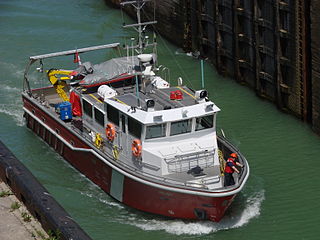 W
WCCGS Kelso is a scientific research vessel operated by the Canadian Coast Guard from CGS Base Burlington in the Central and Arctic Region of Canada. She was commissioned on September 8, 2009, by Terence Young, Member of Parliament for Oakville, at the Canadian Centre of Inland Waters in Burlington. The vessel was built by ABCO Industries Lunenburg Shipyard to replace the retiring CCGS Shark. The ship is named for the late Dr John Kelso, a noted scientist with the Department of Fisheries and Oceans, the parent department for the Coast Guard.
 W
WCCGS Leonard J. Cowley is an ice-strengthened fisheries patrol vessel of the Canadian Coast Guard. The ship entered service in 1984 and is still currently in service. During the Turbot War, the patrol vessel took part in the detainment of the Spanish fishing vessel Estai. Leonard J. Cowley's home port is St. John's, Newfoundland and Labrador.
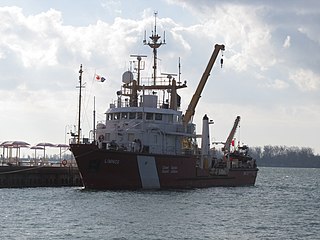 W
WCCGS Limnos is a Canadian Coast Guard coastal research and survey vessel and it is named after the Greek island of Limnos which itself derived from "limni", the Greek word for lake. The ship entered service in 1968 and is currently active. The ship is based on the Great Lakes at the Coast Guard Base in Burlington, Ontario and is used for hydrographic and limnological research.
 W
WCCGS Matthew was a Canadian Coast Guard mid-shore scientific research and survey vessel, based at Dartmouth, Nova Scotia, that entered service in 1990. The ship operated within the Canadian Coast Guard Maritimes region. Matthew was primarily used to carry out hydrographic survey work primarily for the production of nautical charting products on the East and West Coasts, but could also be used for stock assessment using sonar. In 2016, the ship was taken out of service and put up for sale. Two years later a bid for $279,000 was accepted by the Canadian government and is currently in transition of new ownership.
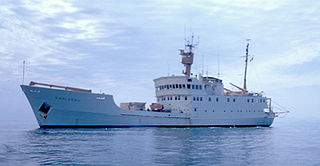 W
WCCGS Parizeau was a Canadian Coast Guard research vessel that served from 1967 to 2001. Initially serving on the West Coast of Canada from 1967 to 1991, in 1992, the ship transferred to the East Coast of Canada. Taken out of service in 2004, the ship was later sold and converted to a yacht and unsuccessfully used for drug smuggling as Destiny Empress.
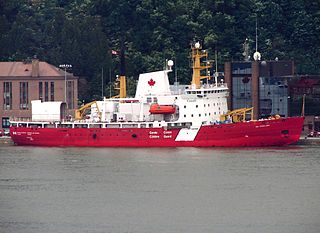 W
WThe Pierre Radisson-class icebreakers, also known as R-class icebreakers, are a class of four icebreakers constructed for and operated by the Canadian Coast Guard. The Canadian Coast Guard designates the four ships in the class as medium icebreakers. Built in two phases, the first three ships, Pierre Radisson, Franklin and Des Groseilliers, were built to a common design. The fourth, Henry Larsen was built to a modified design and is considered a subclass, the Improved R-class icebreaker. Franklin was later renamed Sir John Franklin before undergoing a re-design for use primarily as an Arctic research vessel. Upon the vessel's return to service, the ship was once again renamed Amundsen. All the vessels are named for people who sailed through Canada's northern waters. The class operates in the Arctic Ocean in the summer, patrolling, icebreaking and research missions.
 W
WThe Canadian Coast Guard Ship Revisor is a Canadian Coast Guard inshore fisheries research and survey vessel.
 W
WCCGS Sambro is a Canadian Coast Guard motor lifeboat homeported in Sambro, Nova Scotia.
 W
WCCGS Simcoe was a Canadian Coast Guard buoy tender and light icebreaker. The second vessel of the name in Canadian government service, Simcoe was in service from 1962 to 2007 based out of the Coast Guard base at Prescott, Ontario working the Great Lakes and Saint Lawrence Seaway. In 2008 the ship was sold to commercial interests.
 W
WCCGS Sir John Franklin is an offshore fisheries research ship of the Canadian Coast Guard. The ship was ordered in 2011 as part of the Canadian National Shipbuilding Procurement Strategy (NSPS) as a replacement for aging Canadian Coast Guard vessels. The ship was launched on 8 December 2017, named for Sir John Franklin, an arctic explorer who led two Royal Navy expeditions in search of the Northwest Passage, the second ending with the death of all his crew around 1848. The first of three vessels, Sir John Franklin is the sister ship of CCGS Capt. Jacques Cartier and CCGS John Cabot.
 W
WCCGH Siyay is a Canadian Coast Guard hovercraft based in Richmond, British Columbia.
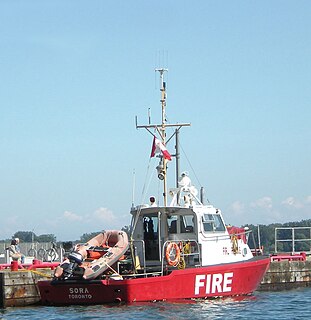 W
WCCGS Sora was a 12.5m Small Multi Task Utility Craft that has seen service with the Canadian Coast Guard and Toronto Fire Services. It was deployed for medium range task and perform under moderate to high speed in moderate weather conditions and in sheltered waters in station mode. In 2005, it was transferred to Toronto and used as part of the Fire Services fleet. It was finally retired in 2015.
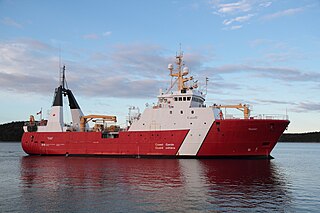 W
WCCGS Teleost is a Canadian Coast Guard fisheries research vessel. The ship was originally constructed in Norway in 1988 as a commercial fishing trawler named Atlantic Champion. In 1993, the Canadian government purchased the vessel and after a competition among schoolchildren, the vessel was named Teleost by the winner. The vessel was converted to an offshore fisheries research vessel in 1994–1995 and entered service in 1996 with the Canadian Coast Guard. The ship is currently in active service.
 W
WCCGS Thunder Cape is one of the Canadian Coast Guard's 36 Cape-class motor lifeboats. She was built in Kingston, Ontario, in 2000, by MetalCraft Marine and MIL Systems and was moved to Goderich, Ontario, in October 2005. Assigned to the Central and Arctic Region, the lifeboat serves the Lake Erie area. The boat is backed up by search and rescue operations from 424 Transport and Rescue Squadron. The Thunder Cape was damaged in a collision with the breakwater at the outlet of the Mission River in Thunder Bay.
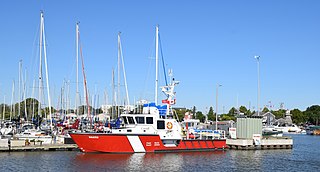 W
WCCGS Vakta is a vessel of the Canadian Coast Guard. She was built in Wheatley, Ontario and was named Vakta, which comes from Icelandic meaning to "watch, guard, or patrol". Vakta is the only Canadian Coast Guard vessel on Lake Winnipeg and stationed in Gimli, Manitoba, the largest harbour between Sarnia, Ontario and Vancouver, British Columbia.
 W
WCCGS Vector is a hydrographic survey vessel in the Canadian Coast Guard. The ship was constructed in Canada and entered service in 1967 as a coastal research vessel on the West Coast. The ship is currently in service, based at Canadian Coast Guard Base Patricia Bay in Sidney, British Columbia.
 W
WCCGS W.E. Ricker was a Canadian Coast Guard offshore fisheries research vessel. The ship was originally constructed as the commercial fishing trawler Callistratus, but was purchased by the Government of Canada in 1984 and converted to a fisheries research vessel and renamed W.E. Ricker. The vessel entered service with the Department of Fisheries and Oceans in 1986 and was transferred to the Canadian Coast Guard in 1995 after the two fleets were amalgamated. The ship was assigned to the West Coast of Canada and was decommissioned on 14 March 2017.
 W
WCCGS Westport is a Canadian Coast Guard search and rescue vessel homeported in Westport, Nova Scotia.